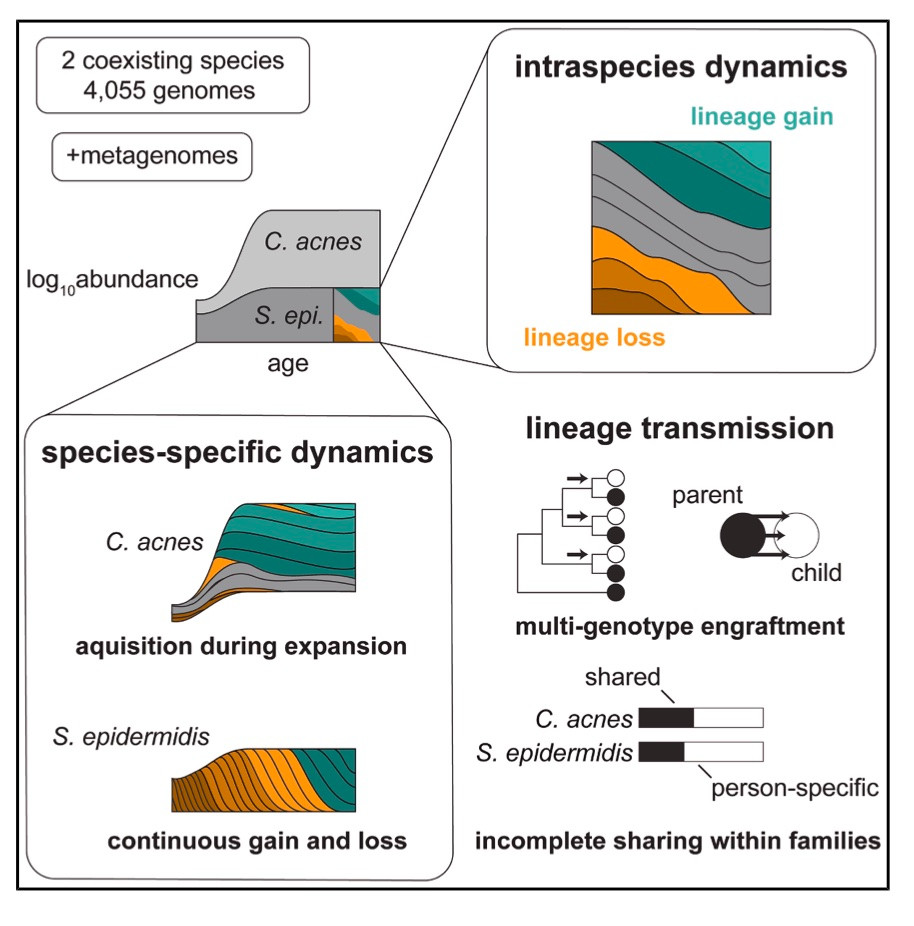Do people in the same household share strains when they have the same species?
How many cells transmit when a strain is shared?
Can strain composition be dynamic when species composition is stable?
We answer these and related questions for the facial skin microbiome in our latest paper.
🧵[1/10]
How many cells transmit when a strain is shared?
Can strain composition be dynamic when species composition is stable?
We answer these and related questions for the facial skin microbiome in our latest paper.
🧵[1/10]

Comments
Interestingly, the facial skin is undergoes an oil-driven expansion during adolescence, which might enhance strain migration. [2/10]
We used culture-based sequencing (~96 colonies/sample!) and metagenomics to study strain dynamics of 2 species.
These two species, C. acnes and S. epidermidis, comprise ~80% of adult facial skin microbiomes.
[3/10]
As expected, each person has many lineages of both species.
[4/10]
-Family members share some, but not all of their lineages.
-When lineages are shared, multiple genotypes are typically transmitted, ruling out a single-cell bottleneck.
This suggests limited transmission despite ample opportunity. [5/10]
In these diagrams, each lineage is represented as the area between two lines, colored by whether it was acquired in early life, late childhood, or adulthood.
For more on how we infer these dynamics, read on.
[6/10]
We can see this from both timeseries data and from looking at intralineage mutation accumulation (measured by dMRCA, which is then converted to time -- tMRCA).
[7/10]